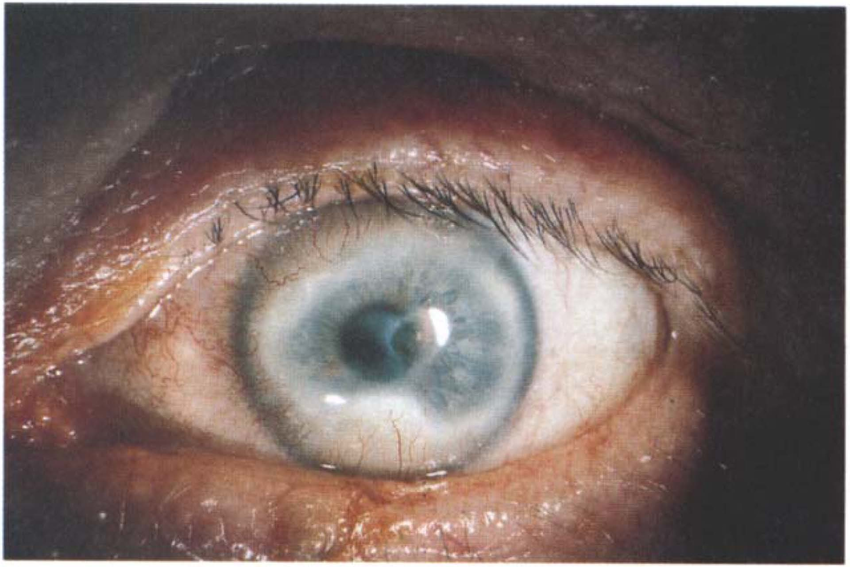
Alkali burns cause corneal damage by pH change, ulceration, proteolyzes, and collagen synthesis defects. Alkali substances are lipophilic and penetrate the eye more rapidly than acids. The basic substance can quickly deposit within the ocular surface tissues, causing saponification reaction within those cells.
Corneal alkali injury often causes extensive damage to the ocular surface and the whole anterior eye segment leading to partial or total vision loss. Immediately after corneal injury,
Such as alkali burns or irradiation of the cornea with UVB rays, oxidative stress appears in the cornea. The activities as well as expressions of corneal antioxidant enzymes substantially decrease, whereas the activities of prooxidant enzymes (e.g., oxidases that generate reactive oxygen species, ROS) remain at physiological levels or even increase. The antioxidant/ prooxidant imbalance appears leading to oxidative stress. ROS are insufficiently cleaved. With the effort to substitute the weakened functions of naturally occurring antioxidants, several synthetic antioxidants have been topically applied on the ocular surface to suppress oxidative stress and enable corneal healing. A study proposed that H2 has the potential as a novel effective antioxidant in preventive and therapeutic applications.
According to these authors, H2 has many advantages as a mild but effective antioxidant: H2 rapidly diffuses into tissues and cells, and it is not mild enough either to disturb metabolic redox reactions or to affect ROS that function in cell signaling. H2 is an inert gas and only the strong oxidants, for example, hydroxyl radicals and peroxynitrite, can oxidize it. In other words, H2 reacts with strong oxidants such as hydroxyl radical and peroxynitrite in cells, and thus it is a potent agent for preventive and therapeutic antioxidant applications. H2 can be consumed in the human body in various ways, including inhaling H2, drinking hydrogen water (H2-dissolved water), taking a hydrogen bath, injecting H2-dissolved saline, dropping H2 onto the eye, and increasing the production of intestinal H2 by bacteria. Whereas, drinking hydrogen-rich water is the easiest and most effective way to consume hydrogen in the body.
A study proposed that if alkali-injured eyes irrigated with H2 solution of 0.5–0.6 ppm for 30 min. The concentration of H2 effectively suppressed oxidative stress in the cornea and reduced corneal neovascularization. The injured eyes were irrigated with H2 solution (H2 in PBS) or PBS free of H2 immediately after the injury and then repeatedly for five days. Results showed that after H2 treatment corneal transparency that was lost after the injury quickly renewed and central corneal thickness that increased after the injury reached physiological levels. On day 20 after the injury in H2 treated corneas the intracorneal inflammation was suppressed, the retrocorneal membrane was not developed, and corneal neovascularization was reduced. This was in contrast to PBS treated alkali-injured corneas, where the intracorneal inflammation was highly developed together with the retrocorneal membrane, and corneas were largely vascularized.
Call Now: 1800-102-0908
Website: https://www.kykindia.com
Source: https://www.nature.com/articles/nm1577
http://iovs.arvojournals.org/article.aspx?articleid=2126880
292 comments. Leave new